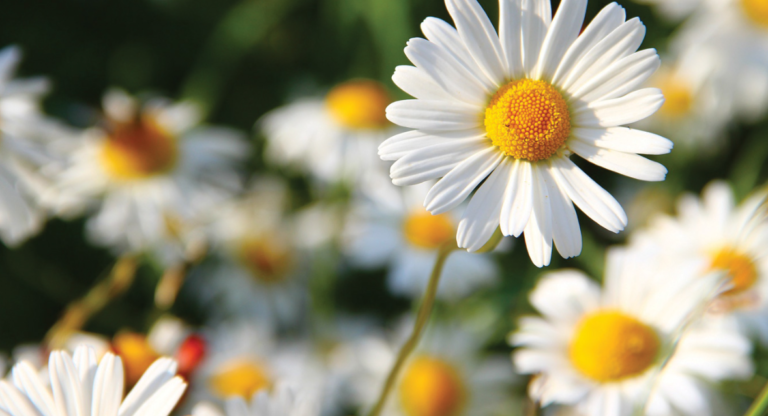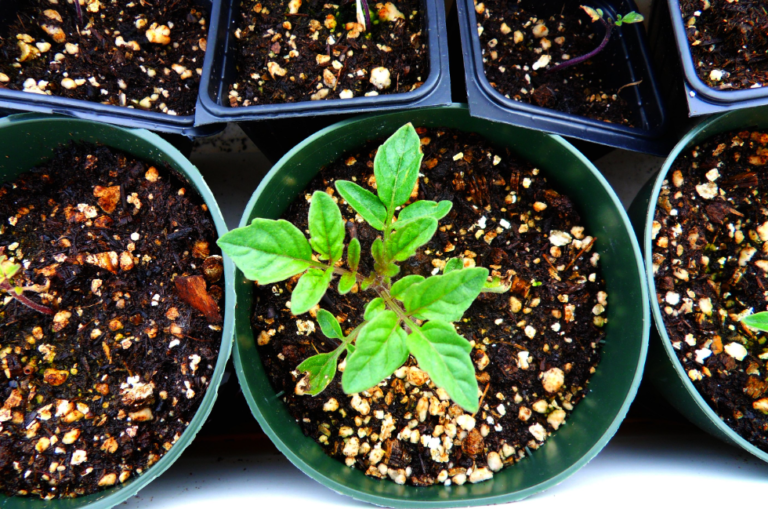Lily pollen
The lily (Lilium spp.) Anther contains a lot of pollen. It is not known if lily pollen contains allergens, and therefore screening pollen allergy-related proteins and genes is necessary. The pollen development period of lily ‘Siberia’ was determined by microscope observation. Early mononuclear microspores and mature pollens were used as sequencing materials. The analysis of the pollen transcriptome identified differentially expressed genes (DEGs), e.g., Profilin, Phl p 7 (Polcalcin), Ole e 1, and Phl p 11, which are associated with pollen allergens. The proteome analysis positively verified a significant increase in pollen allergenic protein content. The expression levels of LoProfiilin and LoPolcalcin, annotated as allergen proteins, gradually increased in mature pollen. LoProfiilin and LoPolcalcin were cloned and their open reading frame lengths were 396 bp and 246 bp, which encoded 131 and 81 amino acids, respectively. Amino acid sequence and structure alignment indicated that the protein sequences of LoProfilin and LoPolcalcin were highly conserved. Subcellular localization analysis showed that LoProfilin protein was localized in the cell cytoplasm and nucleus. LoProfilin and LoPolcalcin were highly expressed in mature pollen at the transcriptional and protein levels. A tertiary structure prediction analysis identified LoProfilin and LoPolcalcin as potential allergens in lily pollen.
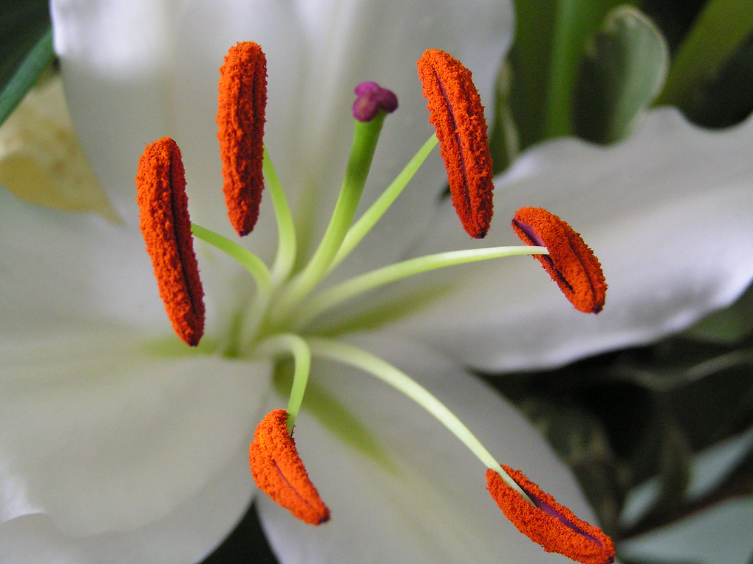
Lily (Lilium spp.) Is a perennial herbaceous bulbous flower of the Liliaceae, which has ornamental, medicinal, and edible functions.
The lily is also one of the world’s main cut flowers due to its beautiful color and pleasant fragrance.However, the anthers of lily are huge and contain a large amount of pollen; Therefore, when the flowers open, pollen pollution will cause many problems, such as clothing contamination, and could also affect the health of people.Pollen is one of the main factors determining the occurrence of seasonal allergies. Unlike food allergies, pollen allergy is often unavoidable .During the period of flower opening, pollen grains are released into the air to form biological aerosols; Thus, individuals are inevitably exposed to pollen .Pollen pollution seriously affects the quality of life for people susceptible to allergies. However, there have been few studies of the allergic proteins in ornamental plants, especially lily.
The outer wall of pollen is mainly composed of sporopollenin, lipids, proteins, and other substances, while various proteins and hydrophobic lipids are also present in the pollen voids and grooves.The allergenic proteins on the surface of the pollen wall may cause allergies in susceptible individuals .Many studies have reported dozens of proteins distributed on the surface of pollen, and pollen allergens are the main pollen surface proteins, including the profilin and polcalcin family proteins .They are called panallergen because the same family of proteins have a common antigen reaction cluster, and they can cause a wide range of cross-reactions.Plant profilin was identified as an allergen in 1991
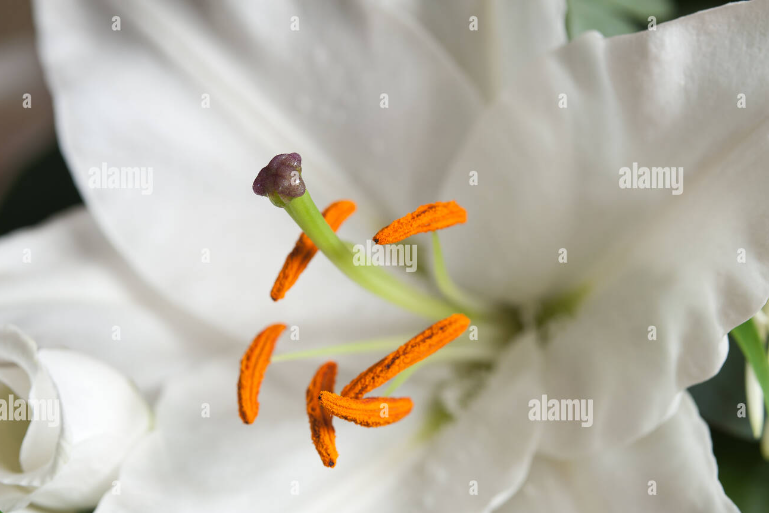
[14]. In Arabidopsis, the profilin gene family is divided into two major classes: Vegetative profilins and reproductive profilins [1]. AtPRF4 and AtPRF5 are mainly expressed in mature pollen .A polcalcin family protein, Phl p 7, is a pollen-specific polcalcin allergen in Timothy grass. Phl p 7 and polcalcin homologues are present in the pollen of many species, and most are positioned on the pollen wall .The majority of allergen studies have focused on the biochemical characteristics, and there have been only a few studies of the production of allergic proteins.
In the past decade, many common allergic pollens belonging to different species have been reported in clinics. Researchers have isolated and identified various pollen allergens, such as Humulus scandens, Artemisia vulgaris , and Ambrosia artemisiifolia .The identification and purification of pollen allergens is of great significance for pollen allergy problems. According to the structure of the plant allergic protein, plant allergic proteins can be divided into four major families: The profilin, prolamin, cupin, and Bet v 1 protein families. Proteins of the same family share a common domain and are relatively conservative in structure. Therefore, the common allergen proteins can be identified in a variety of plants. With the developments in molecular biology technology, the identification of allergens has become increasingly comprehensive. In particular, the combination of transcriptome, proteome, and immunoblotting analyzes has been very helpful for the identification of common allergens in species without any reference genome sequence. This method has been successfully applied to important allergens, such as aphids and ragweed .

LoProfilin is highly expressed in mature pollen at both the transcriptional and protein levels. Profilin proteins have been identified as pollen allergens in other species. AtPRF4 protein is highly expressed in Arabidopsis thaliana mature pollen and is not expressed in other vegetative tissues .Three profilins of maize have been also reported, which are specifically expressed in pollen or anther . In tobacco, the profilin protein is increased with the pollen development, and the expression of profilin in mature pollen is 50–100-fold higher than that of other .These profilin were expressed significantly more in mature pollen than other tissues or expressed specifically in pollen and anthers, which suggests they may play an important role in pollen development and plant reproduction.
To screen and predict lily allergens, we compared gene and protein differences between mononuclear microspores and mature pollen through transcriptomes and proteomics. A profilin and a polcalcin proteins, were specially expressed and cloned from lily pollen. This laid the foundation for our research on lily pollen allergens.
Removing the pollen.
Lily Flowers and Lily Pollen go hand in hand… today’s mechanic is tips for removing the pollen.
1. Remove the lily pollen as soon as the bloom starts to open. Doing it early means the pollen is less messy and won’t stain fingers, clothes or surfaces.
2. Simply pluck the pollen out of the bloom. Don’t cut them off with a scissors. This is unsightly and looks very unnatural in the completed arrangement.
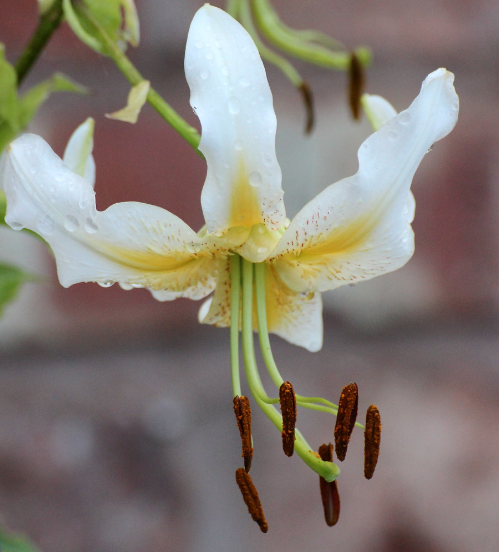
3. If you get Lily pollen on your clothes or fabrics, here’s the BEST tip! Place the fabric in DIRECT Sunshine for 3 hours prior to washing and the pollen will miraculously disappear!
Lily pollen is photo-sensitive and it will dissolve and disappear when placed in direct sunshine. This only works if you do it BEFORE you launder the fabric. If you wait, it will be set forever!

